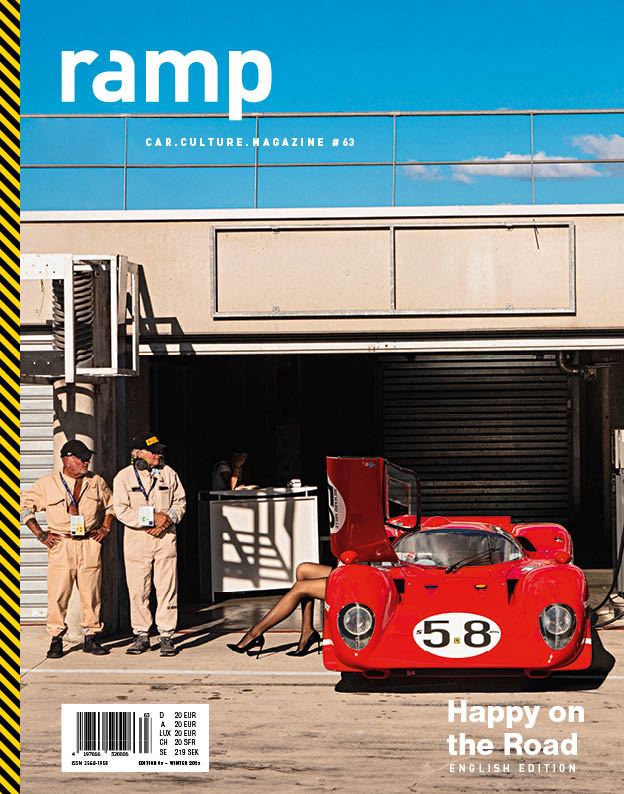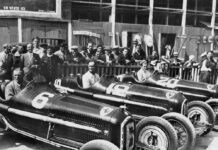The world is going crazy over this hypercar from Croatia. Our author got to drive it.
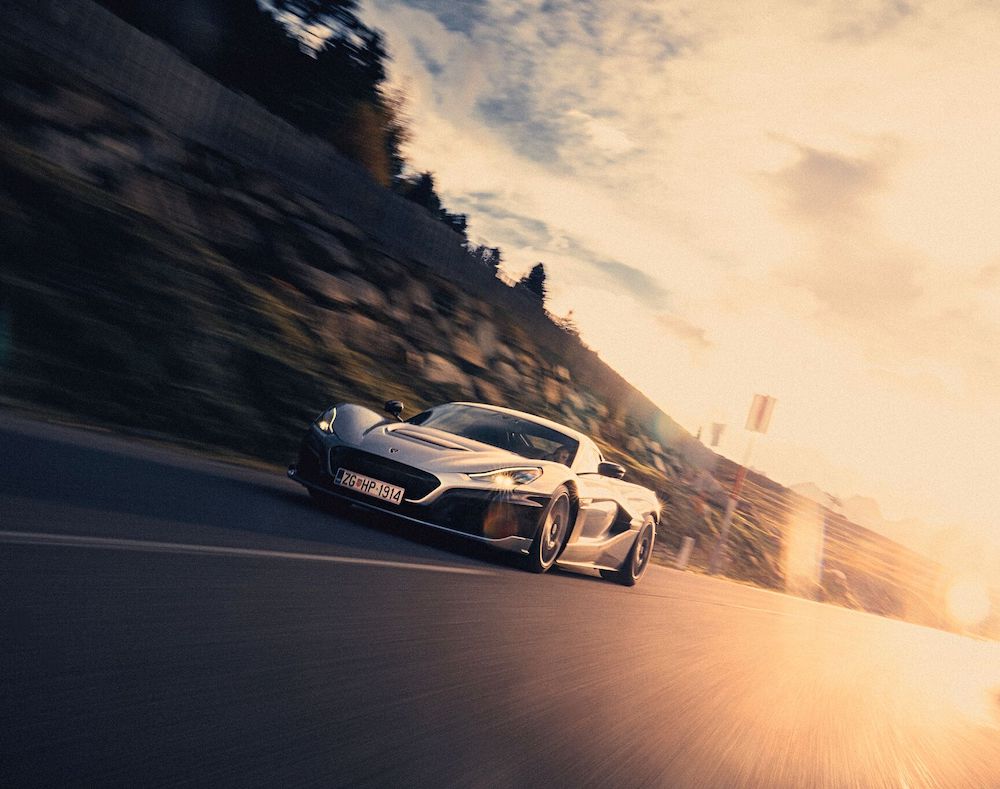
What do you want to hear after my first test drive with the Rimac Nevera? There’s nothing to hear. Just this tantalizingly smooth electric whirr.
Rimac, hmm? How do you pronounce that anyway? There are at least three variations currently in circulation: REE-mahts, REE-mahk and REE-mahtch. Company founder Mate Rimac will answer to all of them. The Croatian innovator and entrepreneur has retained his start-up accessibility at his company headquarters in Sveta Nedelja, seventeen kilometers from Zagreb, despite the dramatic growth his company has experienced since its launch in 2009. Holy Sunday!
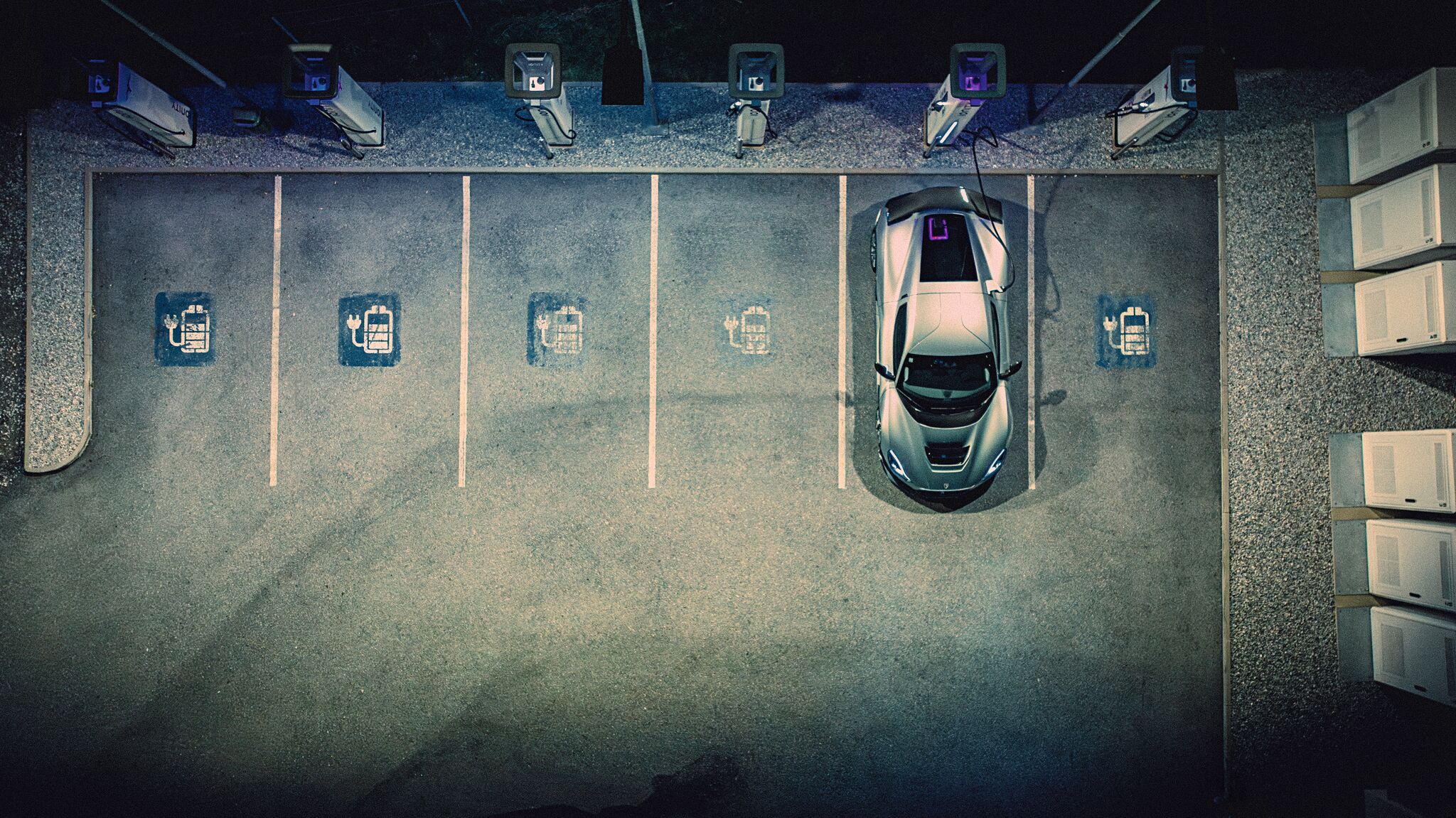
Want to hear the whole story? It’s already part of the great canon of automotive history. After the engine in Mate Rimac’s souped-up BMW E30 exploded during a drift race, he decided to install an electric powertrain. The result were 600 horses of power and, five versions later, an official FIA record for fastest acceleration of an electric car.
The rest of the success story can be read all over and includes the involvement of Porsche, the acquisition of Bugatti, the technical cooperation with Aston Martin (Valkyrie) and Pininfarina (Battista platform production), right up to the 2,000 hp Nevera hypercar that we are dealing with here.
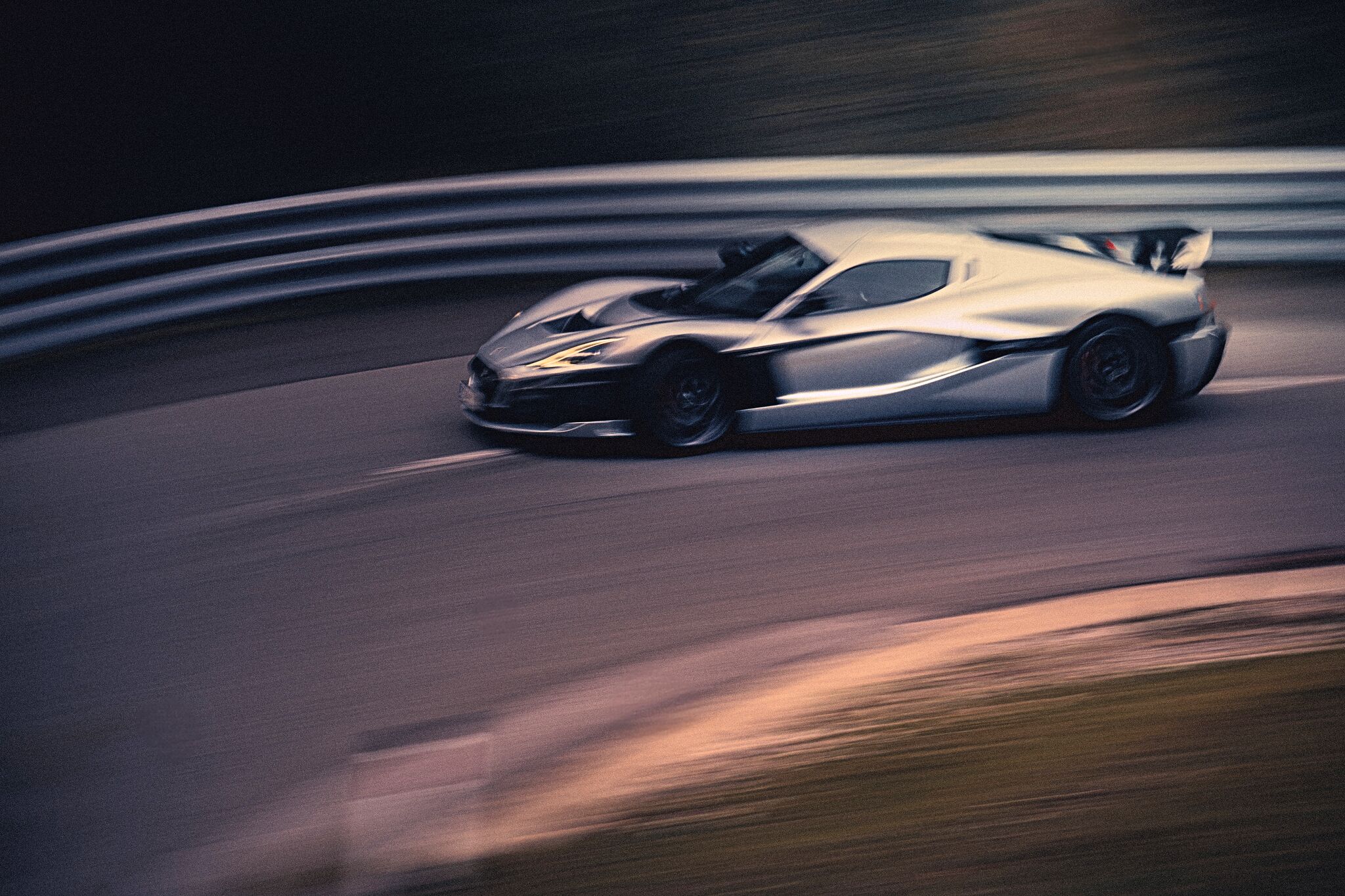
Breathtaking, this speed, which applies to pretty much everything having to do with Rimac.
A nevera is a type of storm or squall wind on the Adriatic Sea. Seems fitting. Other notes: battery capacity of 120 kWh with a voltage of 730 volts, maximum output of 1,888 hp, maximum torque of 2,360 Nm, top speed of 412 km/h, record-breaking 7:05.3 minutes around the Nordschleife, which, according to the manufacturer, the Nevera can do twice at racing speed on a single charge and with one set of tires. Last but not least, the weight specifications: 2.3 tons.
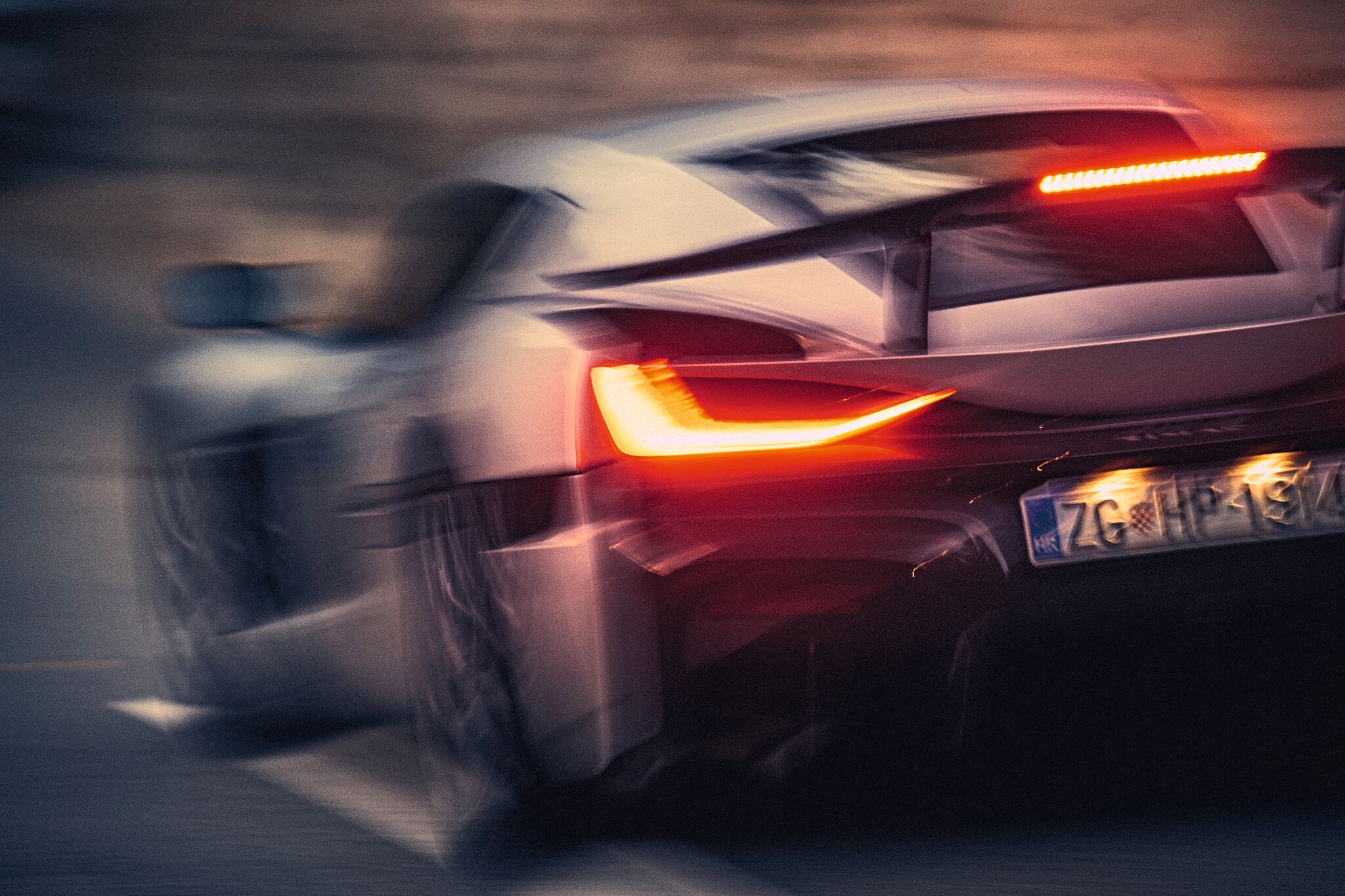
Clearly, a lot of adjustments and fine-tuning are required to make sure that this car doesn’t just self-destruct with a power-to-weight ratio of 1.2 kg per hp. The acceleration value of 1.85 seconds from zero to a hundred is already on the verge of leaving the imaginable. It reaches this speed in just 25.7 meters with an acceleration value of 15.02 m/s2.
Though the value zero must still be defined. The photoelectric sensors of modern measuring systems only start counting after a distance of about one foot (approximately 30 cm) of travel, so strictly speaking it’s a flying start, ideally on an extra rough surface. This just as an aside. One more figure: the Nevera reaches 300 km/h in 9.3 seconds.
Beyond all the theory, there’s only one thing that interests us now: get in and drive off.
As with all super sports and hypercars, the daily driveability is astounding. Admittedly, electric powertrains can do this better than crude combustion engines. Rimac has engineered the entire dynamics control system itself, including the infotainment and online connectivity. The company is rightly proud of its extreme vertical integration. Suspension by KW, air conditioning by Audi R8, brakes by Brembo – everything else is produced in-house, even the carbon-fiber switches.
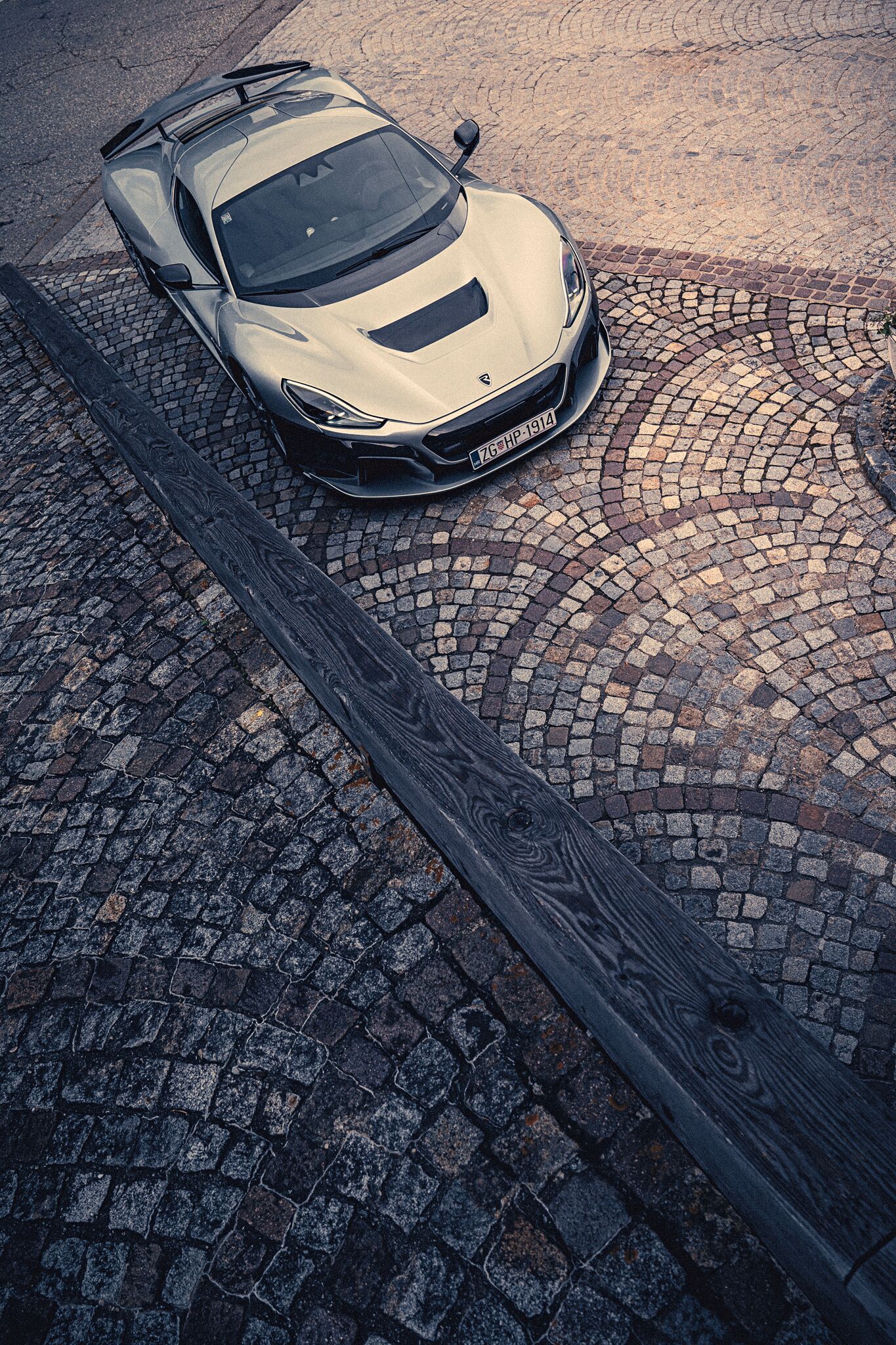
There is actually little about this car that comes as a surprise: classic sports car silhouette with a height of 120 centimeters, attractive sports cockpit with plenty of leather, three screens and a steering wheel that is flattened at the bottom. Carbon bodywork, scissor doors as a hypercar distinction, spectacular aeroblades with Venturi look on the side and a really big rear end including free-standing tail unit, lightning bolt look and diffuser from hell.
No offense, but Lamborghini can do it a little better. One elaborate detail of the Nevara deserves special mention, however: the asymmetric rims that are produced in pairs on the left and right side, which isn’t as obvious as one might think (see the Porsche Taycan, for example, which only has one rim orientation and therefore looks different on each side of the car).
A little more about the technology: each wheel is driven by an electric motor, with the two front axle motors producing 295 hp each, and 644 hp delivered to each of the two rear wheels. Thanks to all the drive variables, the car can also be turned when stationary or maneuvered around bends without any steering input.
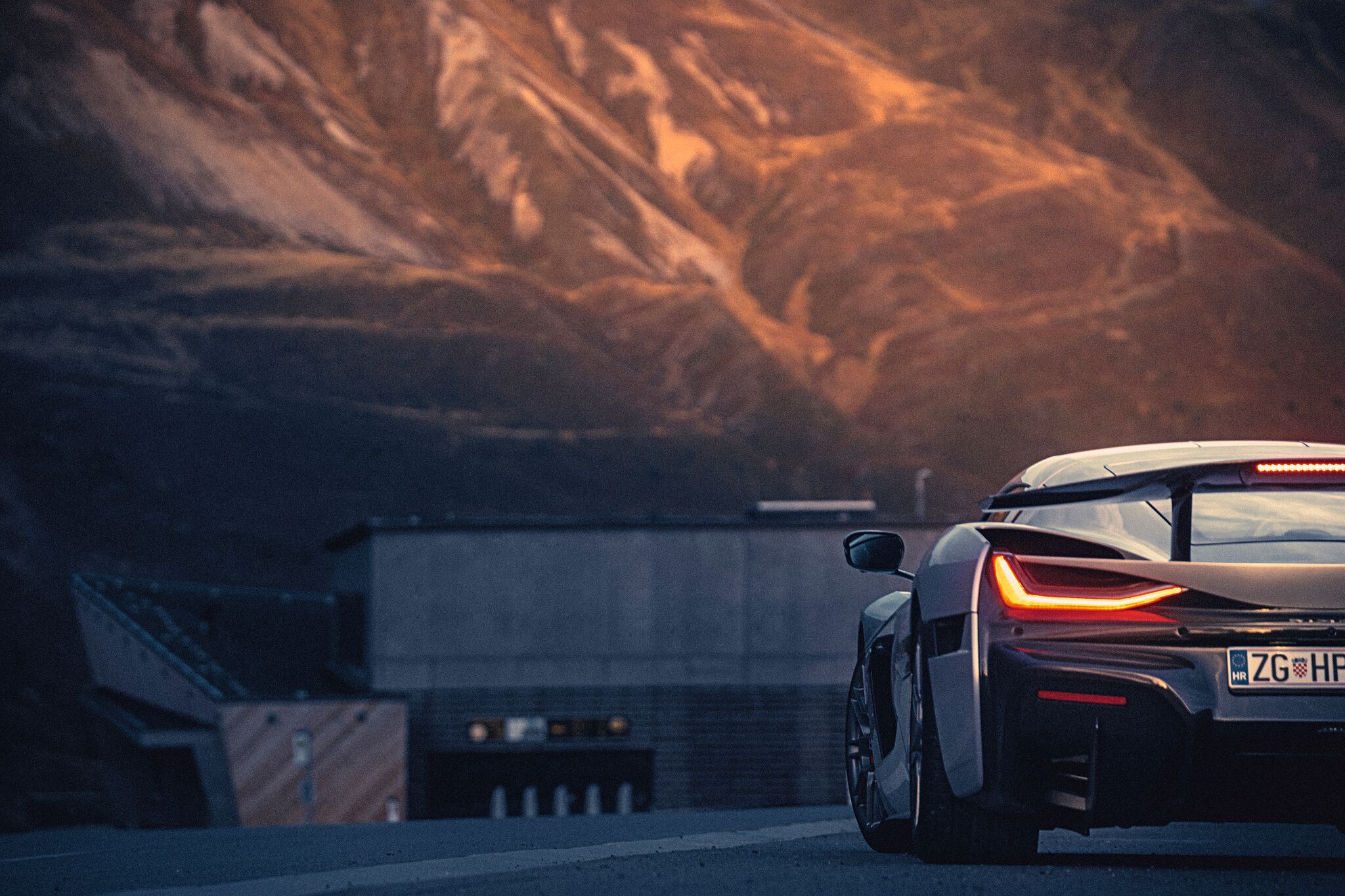
The Nevera delighted us to no end on our beautiful Austrian outing, thanks to its fundamental ease of use and its pedal-to-acceleration ratio, which is unsuspicious in normal operation but behind which lurks an enormous brutality just waiting to be unleashed. 1,408 kW! I just can’t get that figure out of my head. Finally, on the other side of the border: no more speed limits, pedal to the metal, spectacular performance, thank you, Deutsche Autobahn AG: The system reins itself in automatically in Cruise or Range mode – but so cleverly that it’s not really noticeable, complete with incessant torque vectoring control tricks for permanent stabilization. That’s how electric should be! Because what it delivers in terms of power is still beyond the pale – in this stringent, almost arrogantly purring way. All in one gear. Though sometimes you feel like downshifting before a bend, just for fun. And then there’s Track mode . . . That would be great for drifting on a closed-off circuit, but today we’re on a Range trip, because high-performance provider Ionity is giving all one hundred and fifty Nevera owners free charging power for eight years. Perhaps the charging capacity will then increase from the current 350 kW to the 500 kW that are possible with the Nevara. From ten to eighty percent in twenty-one minutes – that’s not enough to achieve the WLTP range of 550 kilometer as specified, but we can still credibly confirm the words of wisdom from the great Austrian duo of cabaret artists Bronner and Qualtinger: “I don’t know where I’m going, but I’ll get there faster!”
P.S.: An affordable version of the Nevera is the 1:64 scale model from Mattel’s Hot Wheels, who have released it as model no. 55.
Text David Staretz
Photos Matthias Mederer · ramp.pictures
ramp #63 Happy on the Road
